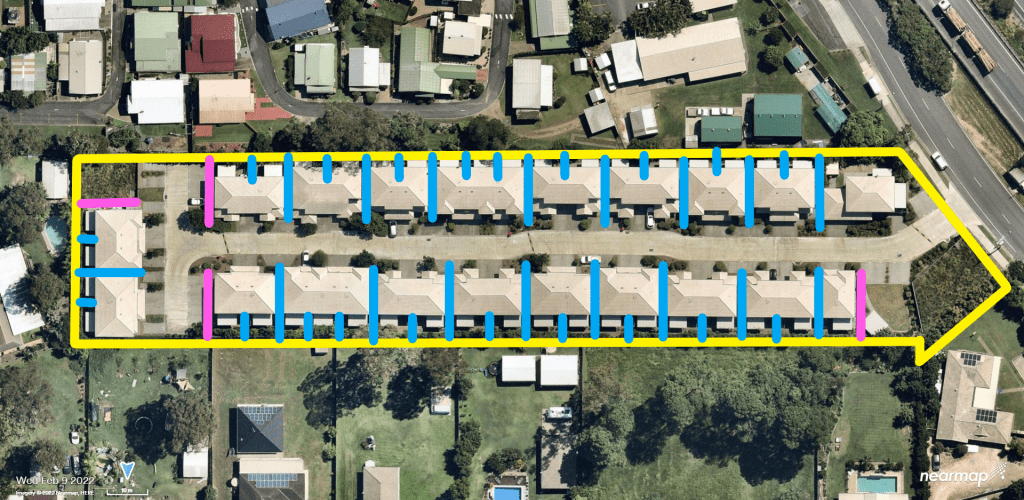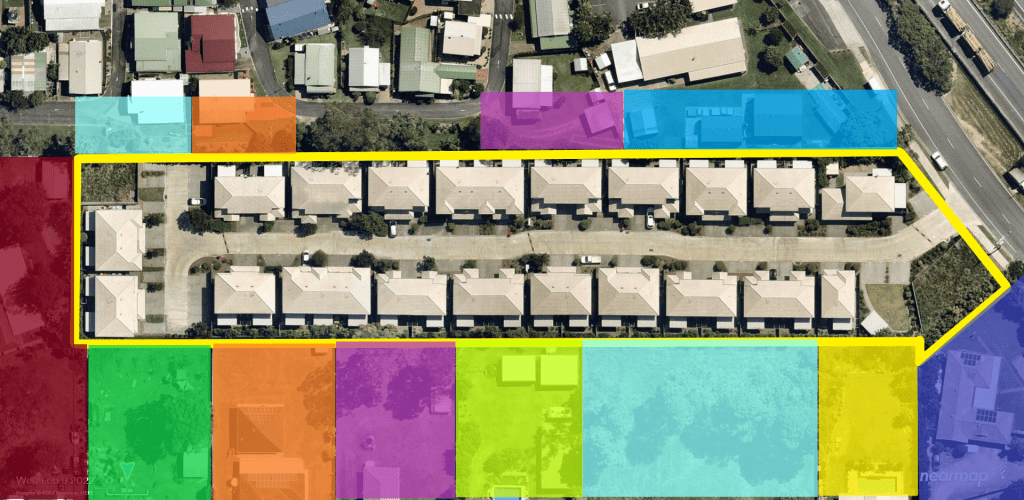If a body corporate boundary fence needs repair or replacement, one neighbour (being one side of the fence) must initiate the process. Before work can commence, both parties must agree on both the extent of the work and the associated costs. During this section of the document, we will assume the body corporate committee is instigating the work.
To begin the quoting process, the committee would firstly ask its caretaking contractor or on-site manager to arrange (generally two) quotes for the repair or replacement of the fence. This cost will determine the level of spending approval required by the body corporate.
Here are our tips for arranging fencing quotes:
Use a map. Download a screenshot from Google Maps and draw in the specific fence sections needing repair or replacement.
Segment the quote. Each applicable neighbour will need itemised costs relating to their section of shared fence.
Double-check measurements. Some fence contractors will base a quote on Google Maps or a similar ‘virtual’ measuring tool. Check that the measurements are accurate against the actual fence sections.
Quote to replace like-for-like. If there is an existing 6-foot pine fence with overlap palings, this is what should be quoted as the replacement. The Queensland fencing legislation requires a default like-for-like replacement, unless an upgrade is approved by all parties.
Quote separately for upgrade options. If the body corporate is considering any upgrades over the current fence standard, for example replacing a timber fence with Colorbond, have this quoted separately. Often the contractor can give a simple upgrade cost, per lineal metre.
Only use QBCC licensed contractors. As this process usually involves negotiation with one or more neighbours, it is important to provide quotes representing market value from a licenced and reputable contractor.
One item often raised when committees are considering a fence project is whether to replace the fence like-for-like or spend more for an upgrade. While appearance is subjective, it is generally accepted that materials like Colourbond are more durable than timber, with lower ongoing repair and maintenance costs.
Unlike other body corporate upgrades that can be voted on by owners at a general meeting, opting for a fence upgrade is a decision also requiring the input and agreement of the neighbours.
If this is an option the body corporate is considering, we recommend gathering clearly itemised quotes with both like-for-like and upgrade options. This will make cost comparisons easier for both committee members and neighbours.
Another important point when considering a fence upgrade is whether the additional funds will trigger the need for a special levy contribution from the lot owners. While this is a cost that should be forecasted in the sinking fund, the allowance may be for a like-for-like replacement and may not benot sufficient to cover the upgrade.
Most of this article discusses fencing projects initiated by the body corporate, however, it is equally possible for a neighbour to issue a contribution notice to the body corporate for its part of a shared fence.
If the body corporate receives a ‘Notice to Contribute to Fencing Works’ it has 30 days to respond to the issuing neighbour. The committee would generally be in a position to respond and agree to an individual notice, unless the contribution sought by the neighbour was higher than its spending limit.
If the contribution sought by the neighbour is above the committee’s spending limit, it may need to respond to the notice on a provisional basis and seek to ratify that expenditure through an EGM.
If the body corporate does not respond to the neighbour within the timeframe stated on the notice (either for spending limit or other reasons), the body corporate may recieve a QCAT application from the neighbour.


